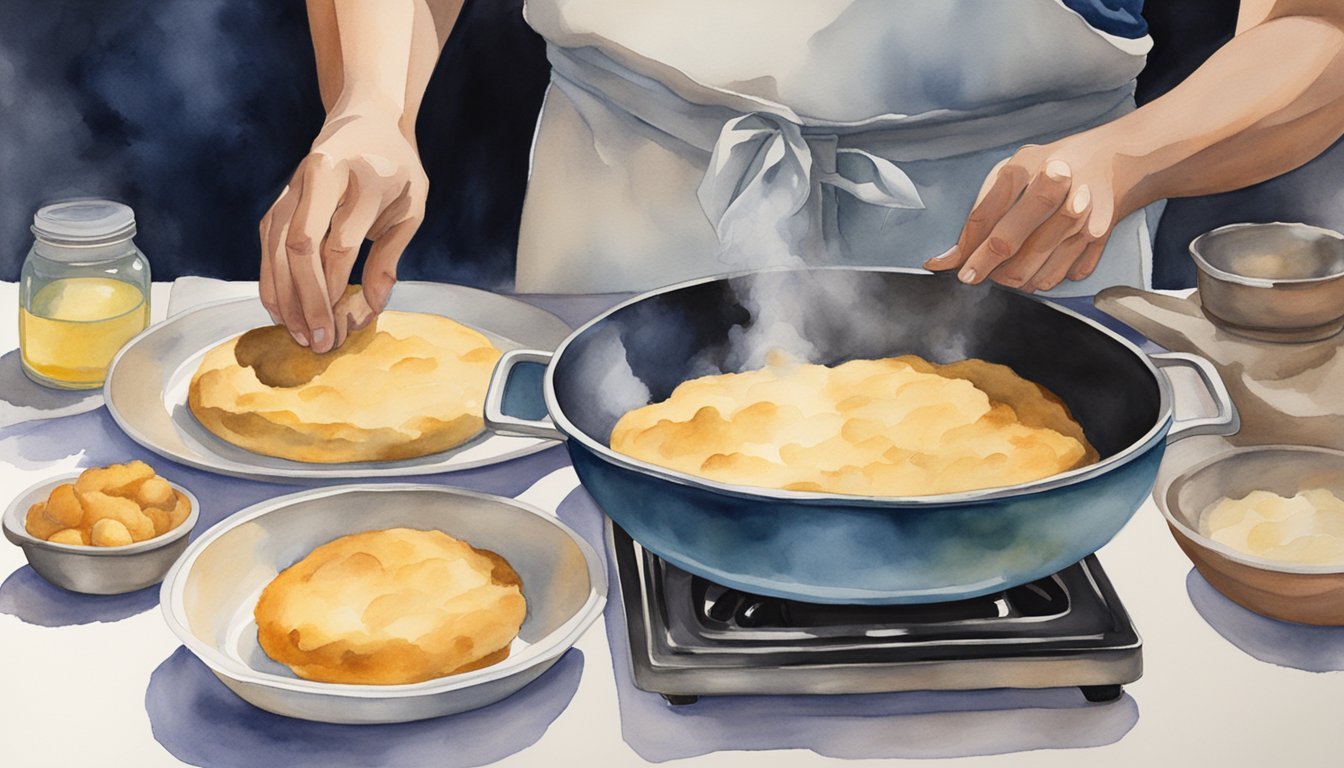Frybread Origins and Significance
Historical Context
Frybread is a dish traditionally made by the indigenous people of North America, particularly the Navajo tribe. It is a flat dough bread, fried or deep-fried in oil, shortening, or lard, and made with simple ingredients, such as wheat flour, water, salt, and sometimes baking powder. It can be eaten alone or with various toppings like honey, jam, powdered sugar, venison, or beef (Wikipedia).
The origins of frybread can be traced back to the 1860s when the Navajo people were forcibly relocated on the Long Walk to Bosque Redondo, a concentration camp in New Mexico. During this time, the Navajo were provided with government rations consisting of flour, sugar, and shortening. These ingredients formed the basis of what would become frybread. With limited resources and unfamiliar ingredients, the Navajo people adapted by creating frybread as a means of survival. Over time, this simple yet hearty food became a cultural symbol, representing both resilience and hardship. Much like the unexpected history of chewing gum origin, frybread’s beginnings are deeply intertwined with struggle and adaptation.
Cultural Symbolism
Frybread has since become an important cultural symbol for Native American tribes. It represents their survival and ability to adapt amidst oppression and adversity. The dish is a reminder of the significant challenges faced by Native American people throughout history (Taste Pursuits).
In many Native American communities, frybread is a staple food and holds a special place in their culture. It is often enjoyed during gatherings, celebrations, and even in Native American restaurants across the nation.
Although the dish represents resilience and creativity, it also has a controversial history due to its origins in a time of oppression. The Navajo frybread exemplifies the balance of both their struggles and triumphs.
Through these Historical Context and Cultural Symbolism subsections, the significance of frybread as a cultural icon in the lives of indigenous people of North America is evident.
Making Frybread

Ingredients & Variations
Frybread is a simple flatbread made from common pantry ingredients: all-purpose flour, baking powder, salt, and hot water. Sometimes, leavening agents like yeast are added for a different texture, and fat like shortening or lard can be incorporated for added flavor. Traditionally, frybread is deep-fried in oil, but some recipes call for vegetable or canola oil.
While many recipes stick to traditional ingredients, there are variations that may use different types of flours, such as wheat or corn. Additionally, the dough can include sugar or powdered sugar for a sweeter version of this versatile bread.
Frybread Preparation and Cooking Tips
To make frybread, follow these steps:
- Mix the dry ingredients (flour, baking powder, and salt) in a large bowl.
- Gradually add hot water to the dry ingredients, mixing until a smooth and pliable dough forms.
- Knead the dough for about 5-7 minutes, to develop its elasticity (source).
- Form dough into flat discs, and be sure to create a hole in the middle. The hole will prevent the bread from puffing up while frying (source).
- Carefully deep-fry the discs until they become golden brown, about 1-2 minutes on each side, and then set to rest on paper towels to remove excess grease.
When frying, it’s important to use a heavy saucepan and monitor the oil temperature, as too high or low a temperature can affect the final texture of the bread. Be cautious not to overwork the dough, as over-kneading can result in a tough final product.
Serving Suggestions
Frybread is highly versatile and can be served with a wide variety of toppings and fillings. Here are some popular options:
- Sweet: Serve frybread with honey, jam or dusted with cinnamon sugar.
- Savory: Top with ground beef, shredded cheese, lettuce, and tomatoes to make Navajo tacos (source). Frybread can also be served with beans, soups, stews, or chili for a heartier meal.
- Native American inspired: Fill the bread with venison patties, salsa, olives, or other traditional ingredients.
Since frybread doesn’t have an extremely high nutritional value, it’s best enjoyed in moderation. Freshly made frybread is best, but leftovers can be stored in an airtight container or wrapped in plastic wrap. To reheat, simply warm it up in an oven or on the stovetop.
Embrace the simple ingredients and cooking techniques, and experiment to find your favorite frybread recipe. Whether enjoyed as a snack or incorporated into a meal, frybread’s crispy, golden-brown goodness will surely delight.

